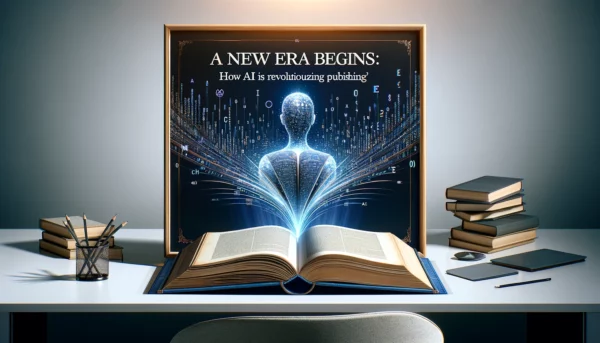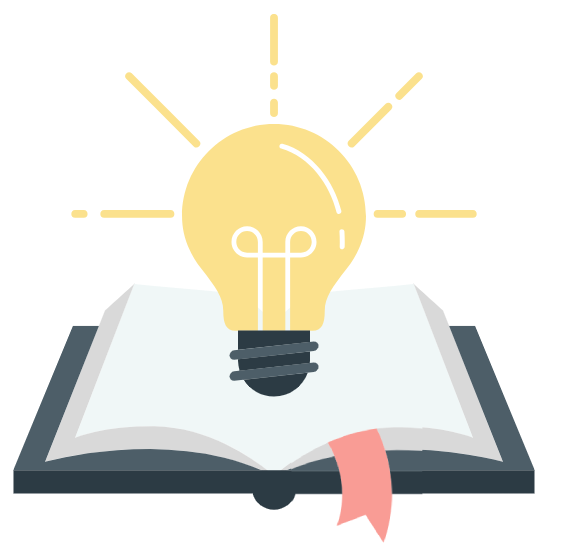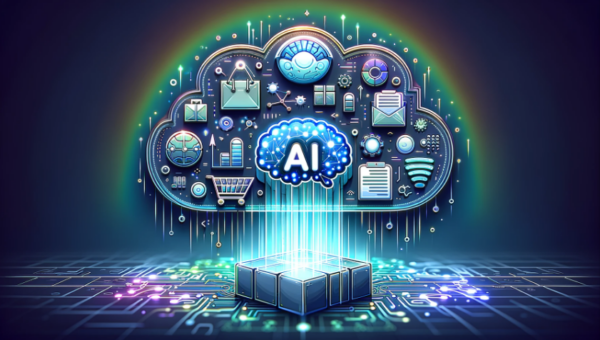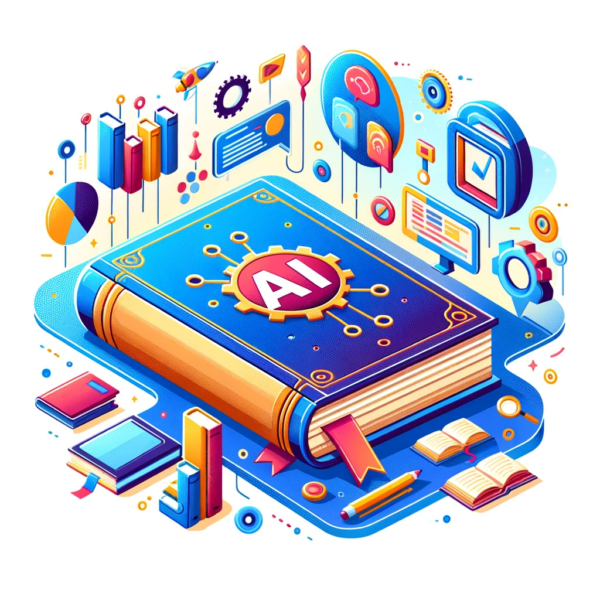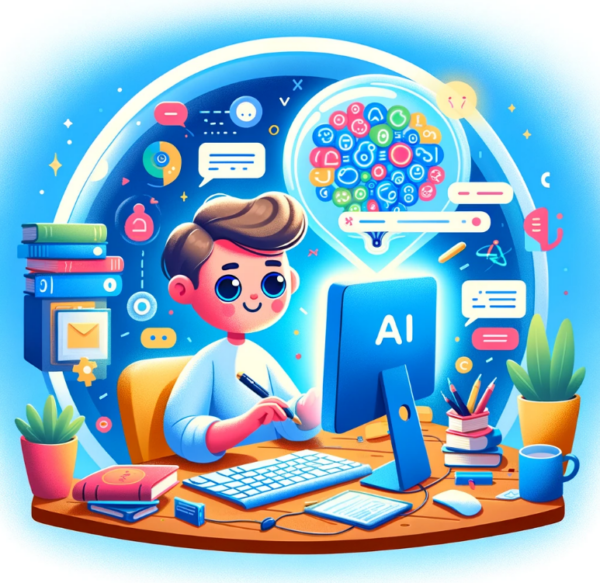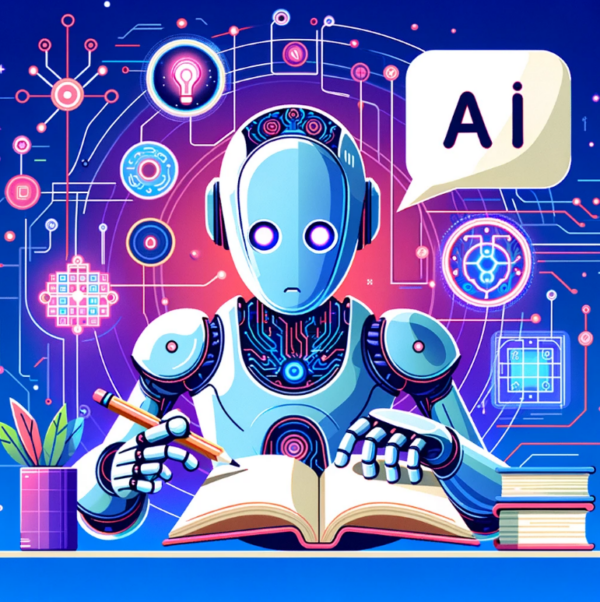The traditional book publishing process has long been a cornerstone of cultural and intellectual dissemination. Rooted in a rich history, this process typically begins with an author’s idea, which is then transformed into a manuscript. Once completed, the manuscript undergoes a series of steps before reaching the eager hands of readers. These steps include submission to publishers, rigorous editing and proofreading, design and typesetting, printing, and finally, distribution and marketing. This pathway, often arduous and time-consuming, has been the bedrock of sharing knowledge and stories for centuries.
In recent years, however, a new player has entered the scene, promising to revolutionize this established process: Artificial Intelligence (AI). How AI is Revolutionizing Publishing is evident in its emergence across various industries, having a transformative impact, and the realm of book publishing is no exception. This technology, which enables machines to mimic human intelligence and perform tasks that traditionally require human cognition, is now beginning to permeate the layers of book creation and distribution.
The integration of AI in book publishing is not just a futuristic idea but a present reality. From using sophisticated algorithms for market analysis and reader preference prediction to deploying AI tools for editing and layout design, the impact of AI is increasingly visible. This shift towards AI-assisted processes marks the beginning of a new era in book publishing. It promises to streamline traditional procedures, enhance creativity, and open up unprecedented possibilities for both authors and publishers.
As we stand on the brink of this significant transformation, it’s essential to explore how AI is reshaping the landscape of book publishing. This journey into the future of books will not only reveal the potential of AI in enhancing the way stories are told and shared but also highlight the challenges and ethical considerations that come with this technological revolution. The following sections will delve deeper into these aspects, offering a comprehensive view of how AI is setting the stage for a new chapter in the world of books.

The Evolution of the Publishing Industry
The publishing industry, often viewed as a bastion of tradition and cultural guardianship, has experienced profound changes over the centuries. From the painstakingly manual processes of its inception to the digitized and rapid methods of today, the industry’s evolution is a testament to its ability to adapt and transform. This section delves into the historical journey of book publishing, tracing its origins and developments, and examines the challenges that the traditional publishing model faces in the modern era.
Start Your Publishing Journey FOR FREEHistorical Perspective on the Publishing Industry’s Development
The journey of the publishing industry is a fascinating tale of evolution, adapting and transforming with each technological and cultural shift. In its earliest form, publishing was a labor-intensive process involving hand-written manuscripts, which were accessible only to the elite. The invention of the printing press by Johannes Gutenberg in the 15th century marked a pivotal moment, democratizing knowledge by making books more accessible and affordable. This innovation spurred the first major wave of change in the publishing industry, leading to an era of mass production of books.
Over the centuries, the industry continued to evolve. The 19th and 20th centuries witnessed a surge in literacy rates and public education, expanding the audience for books and creating a thriving market for diverse genres. The introduction of paperback books in the 20th century further revolutionized accessibility, making books even more affordable and widespread.
Challenges Faced by the Traditional Publishing Model
Despite its adaptability, the traditional publishing model has faced significant challenges in recent years. One of the primary challenges has been the increasing cost of production, distribution, and marketing, which has put pressure on both publishers and authors. The traditional model often involves a lengthy process from manuscript to publication, sometimes taking years for a book to reach the market. This delay can be detrimental in a world where trends and public interests change rapidly.
Another challenge is the highly competitive nature of the industry. With thousands of manuscripts submitted to publishers every year, only a small percentage make it to publication. This high level of competition makes it difficult for new authors to break into the market and for established authors to maintain their visibility.
The rise of digital technology and the internet has also posed a challenge to the traditional model. The increasing popularity of e-books and online reading platforms has disrupted the physical book market. Additionally, the growth of self-publishing platforms has empowered authors to bypass traditional publishing routes, creating a shift in the industry dynamics.
These challenges have set the stage for the introduction of AI in the publishing industry. The next sections will explore how AI is being leveraged to address these challenges, offering innovative solutions and opening new avenues for authors, publishers, and readers alike.

The Current State of the Publishing World
In an era marked by rapid technological advancement and shifting consumer preferences, the publishing world finds itself at a crossroads. This section explores the current landscape of the publishing industry, delving into how recent technological innovations and evolving trends are reshaping the way books are produced, distributed, and consumed. We’ll examine the impact of digitalization, the burgeoning phenomenon of self-publishing, and the overall state of the industry in today’s tech-driven world.
Start Your Publishing Journey FOR FREEOverview of the Present-Day Publishing Landscape
The contemporary publishing world is a dynamic and multifaceted landscape, significantly shaped by technological advancements and changing consumer behaviors. The advent of digital technology has revolutionized the way content is created, distributed, and consumed. E-books, audiobooks, and digital platforms have become increasingly popular, complementing and, in some cases, challenging traditional print media. This digital shift has also enabled publishers to reach a global audience more easily, breaking down geographical barriers that once limited book distribution.
Discussion of Recent Technological Advancements and Their Impact on Publishing
Technological advancements, particularly in digital publishing and online platforms, have had a profound impact on the industry. The rise of e-readers and mobile reading apps has made books more accessible, allowing readers to access a vast library of titles at their fingertips. Online retail giants and e-commerce platforms have also changed the distribution and sales model, often offering books at competitive prices and with greater convenience than traditional bookstores.
The use of data analytics has become crucial in understanding reader preferences, enabling publishers to make data-driven decisions about which books to publish and how to market them. This technology allows for more targeted marketing strategies and personalized recommendations, enhancing reader engagement.
Current Trends in the Industry, Including Digitalization and Self-Publishing
One of the most notable trends in the industry is the rise of self-publishing. Platforms like Amazon Kindle Direct Publishing and Smashwords have democratized the publishing process, allowing authors to bypass traditional publishing houses and reach readers directly. This shift has given rise to a new wave of authors and has challenged the traditional gatekeeping role of publishing houses.
Another significant trend is the increasing focus on digitalization. Publishers are not only offering digital versions of books but also exploring interactive e-books, enhanced with multimedia elements like audio, video, and interactive graphics. This evolution is changing the very nature of what a book can be.
Artificial Intelligence: A Game Changer
As we navigate through the evolving landscape of the publishing world, a key technological force emerges as a potential game changer: Artificial Intelligence (AI). This section delves into the world of AI, exploring its fundamental concepts and the transformative impact it is having across various industries. We will examine how AI, once a concept found only in science fiction, is now a reality that’s reshaping the creative process, including the realm of book publishing. By understanding AI’s capabilities and its current applications, we can better grasp its potential to revolutionize the way stories are written, edited, and experienced.
Definition and Basic Understanding of AI
Artificial Intelligence (AI) refers to the simulation of human intelligence in machines that are programmed to think and learn like humans. The core of AI is the ability to rationalize and take actions that have the best chance of achieving a specific goal. AI systems are powered by algorithms, using patterns and inference to process data, make decisions, and learn from outcomes.
How AI Technologies are Currently Being Used in Various Industries
In industries ranging from healthcare to finance, AI is being used to streamline processes, enhance efficiency, and unlock new possibilities. In healthcare, AI assists in diagnosis and personalized medicine. In finance, it’s used for risk assessment and algorithmic trading. In the automotive industry, AI is at the forefront of developing self-driving cars. These varied applications demonstrate AI’s versatility and its potential to revolutionize different sectors.
Potential of AI in Creative Processes
In the realm of creativity, AI is beginning to play a significant role. In the visual arts, AI algorithms are creating unique pieces of art, while in music, AI is being used to compose new songs and even entire albums. In the literary world, AI is starting to assist in the writing process, offering tools for editing, plot development, and even generating creative content.
The potential of AI in creative processes is vast. It can be used to augment human creativity, offering new ways to approach and solve creative challenges. AI can analyze vast amounts of data to identify trends and patterns that might inspire new creative works. In publishing, this means AI can assist in everything from writing and editing to marketing and reader engagement. As AI continues to evolve, its role in the creative industries is likely to expand, opening up new horizons for human-machine collaboration in the arts.
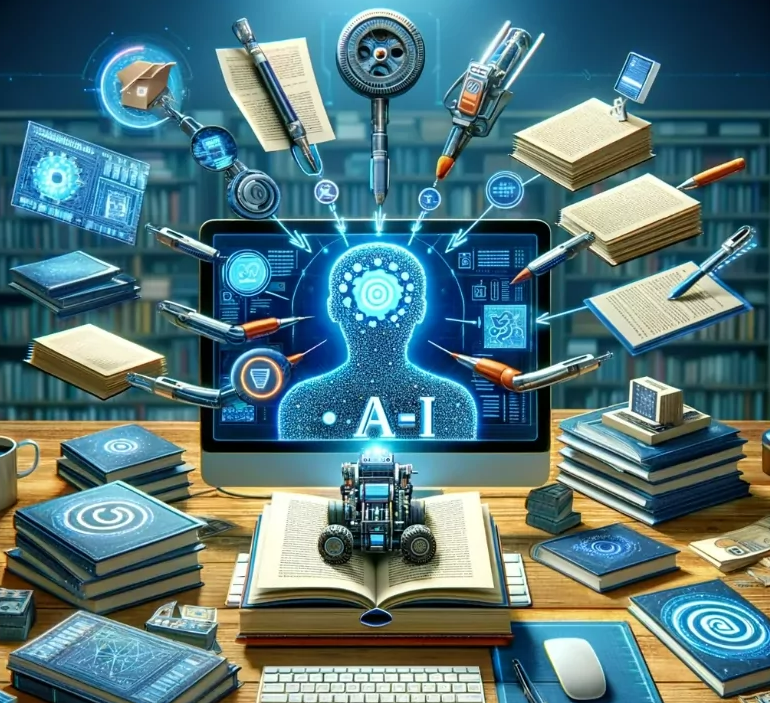
AI’s Role in the Book Publishing Industry
The advent of AI in the book publishing industry marks a significant shift in how books are brought to life and delivered to readers. This section explores the multifaceted role of AI in this sector, from the early stages of manuscript preparation to the final steps of marketing and reader engagement. We will delve into specific applications where AI is making its mark, enhancing efficiency, accuracy, and creativity. Additionally, we’ll look at real-world examples where AI’s integration in publishing has yielded notable successes, demonstrating the tangible benefits of this technological revolution.
Specific Applications of AI in Book Publishing
- Manuscript Editing and Proofreading: AI-powered tools are revolutionizing the editing process by offering more efficient and accurate proofreading services. These tools can identify grammatical errors, suggest stylistic improvements, and even detect inconsistencies in the plot or character development, thereby enhancing the quality of the manuscript.
- Predictive Analytics for Market Trends and Reader Preferences: AI algorithms can analyze vast amounts of data on reader preferences and market trends, helping publishers make informed decisions about what books to publish. This data-driven approach can predict potential bestsellers, identify niche markets, and tailor publishing strategies to meet evolving reader demands.
- Automated Layout and Design: AI is also streamlining the book design process. From automated typesetting to intelligent layout designs, AI tools are capable of creating visually appealing book formats, saving time and resources while maintaining high-quality standards.
- AI in Marketing and Targeted Advertising: Leveraging AI in marketing campaigns allows publishers to target potential readers more effectively. AI can analyze consumer data to identify target demographics, optimize advertising channels, and personalize marketing messages, resulting in more effective and efficient marketing strategies.
- Enhancing Reader Engagement Through AI-Based Recommendations: AI-driven recommendation systems have become a staple in online book retailing. These systems analyze user preferences and reading habits to suggest books, enhancing discovery and maintaining reader interest. This not only benefits readers but also helps authors and publishers by increasing visibility for their books.
Challenges and Ethical Considerations
While the integration of Artificial Intelligence (AI) in the publishing industry heralds many exciting opportunities, it also brings forth a range of challenges and ethical considerations. This section will delve into the complexities and dilemmas posed by the adoption of AI in publishing. We will explore how issues such as accuracy, job displacement, authorship, and creative integrity are shaping the conversation around AI in this field. Additionally, we’ll look ahead to what the future might hold, considering the potential developments and impacts of AI in book publishing.
Addressing the Challenges Posed by AI in Publishing
- Accuracy: While AI can process and analyze data at an unprecedented scale, there are concerns about the accuracy and reliability of its output. AI systems are only as good as the data they are trained on, and biases in this data can lead to skewed results. In publishing, this might mean inaccuracies in manuscript editing or misjudged market trends.
- Job Displacement: The automation capabilities of AI bring into question the future role of human professionals in the publishing industry. Tasks such as editing, design, and market analysis are traditionally human-led roles. The concern is that AI could displace these jobs, leading to a reduction in the workforce and a potential loss of human expertise and nuanced understanding in the publishing process.
Ethical Considerations
- Authorship: The use of AI in the creative process of writing raises questions about authorship. If a significant portion of a book is generated or heavily edited by AI, who is the true author? This question challenges traditional notions of authorship and intellectual property.
- Creative Integrity: There’s a debate about the impact of AI on creative integrity. The concern is that reliance on AI for content creation and decision-making might lead to homogenization, where books are tailored to predicted preferences, potentially stifling originality and creative risk-taking.
How AI is revolutionizing publishing – Future Prospects and Predictions
Looking towards the future, AI in publishing is poised to become more sophisticated and integrated. We can expect further advancements in AI algorithms that will enhance their accuracy and reduce biases, making AI tools more reliable and effective. The role of AI in personalizing reader experiences and opening new avenues for interactive and multimedia content is also likely to grow.
However, the industry must also prepare for ongoing discussions about the ethical implications of AI. The balance between leveraging AI for efficiency and maintaining the human touch in storytelling will be a key focus. Additionally, the publishing world will need to adapt to new roles and skills, as the workforce evolves to work alongside AI.
The future of AI in publishing is a landscape of immense potential but also one that requires careful navigation to harness its benefits while upholding the values and principles that are fundamental to the world of books.
Predicting the Future of AI in Book Publishing
As we venture further into the 21st century, the intersection of AI and book publishing is set to deepen, opening up new frontiers that were once the realm of science fiction. This section explores the potential future trajectory of AI within the book publishing industry. We will consider how AI might reshape the roles of key players in the publishing process – authors, publishers, and readers – and reflect on the delicate balance between technology and human creativity that will be pivotal in defining this future.
How AI Might Shape the Roles of Authors, Publishers, and Readers
- Authors: For authors, AI can be both a tool and a collaborator. AI-driven platforms might offer more sophisticated writing aids, from suggesting narrative improvements to generating content for certain book sections. Additionally, AI can assist in the proofreading process, identifying grammatical errors and stylistic inconsistencies with greater precision than traditional methods. Beyond writing, AI can also aid in the design aspect, such as creating eye-catching book covers that resonate with the intended audience. However, this also leads to a reevaluation of the author’s role – from sole creator to a collaborator with AI. This change could redefine what it means to be an author, potentially expanding the scope for creativity while also raising questions about authorship and originality.
- Publishers: Publishers are likely to embrace AI for its analytical capabilities, using it to make more data-driven decisions about acquisitions, marketing, and distribution. AI could help publishers identify emerging trends and reader preferences with greater precision, allowing for more targeted and successful book launches. However, this also means publishers will need to adapt to an increasingly data-centric approach, balancing it with traditional editorial judgment.
- Readers: For readers, AI promises a more personalized and interactive reading experience. From AI-curated reading lists to interactive e-books that adapt to individual preferences, the way readers engage with books could be significantly enhanced. This personalization, however, might come at the cost of privacy concerns, as AI systems would require access to personal data to tailor recommendations and experiences.

The Balance Between Technology and Human Creativity
As AI becomes more entrenched in the publishing process, the industry will face the challenge of maintaining a balance between technological efficiency and human creativity. While AI can optimize and streamline various processes, the unique human touch in storytelling, editorial judgment, and artistic expression remains irreplaceable. The future of publishing will likely involve a symbiotic relationship between AI and human creativity, where each complements the other.
The path ahead is both promising and challenging. It invites us to reimagine the world of books, where AI and human ingenuity coexist and collaborate, ushering in a new era of publishing that is more inclusive, efficient, and attuned to the evolving needs of the modern reader. In this new era, the story of books continues to unfold, enriched and expanded by the possibilities that AI brings.
